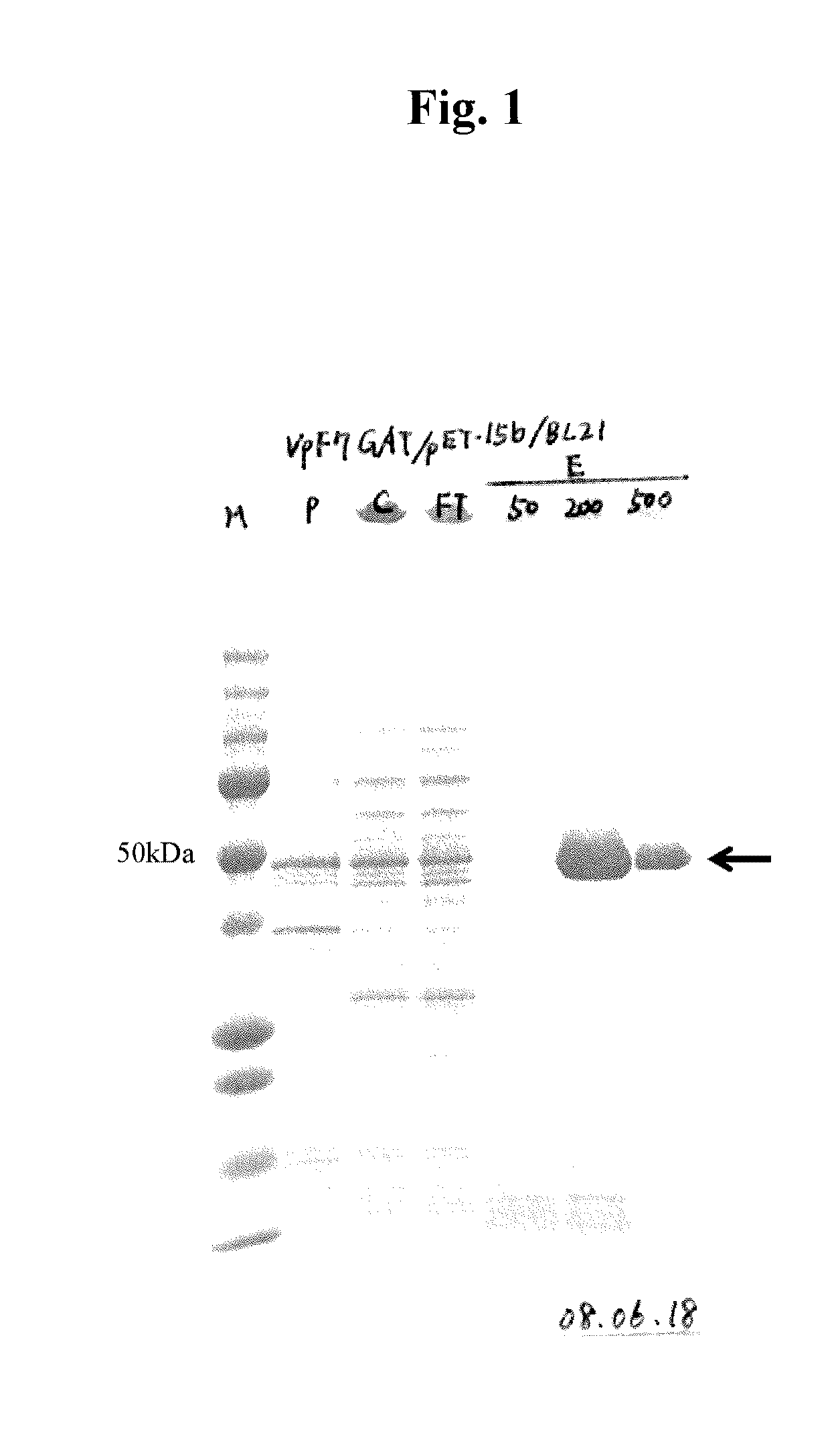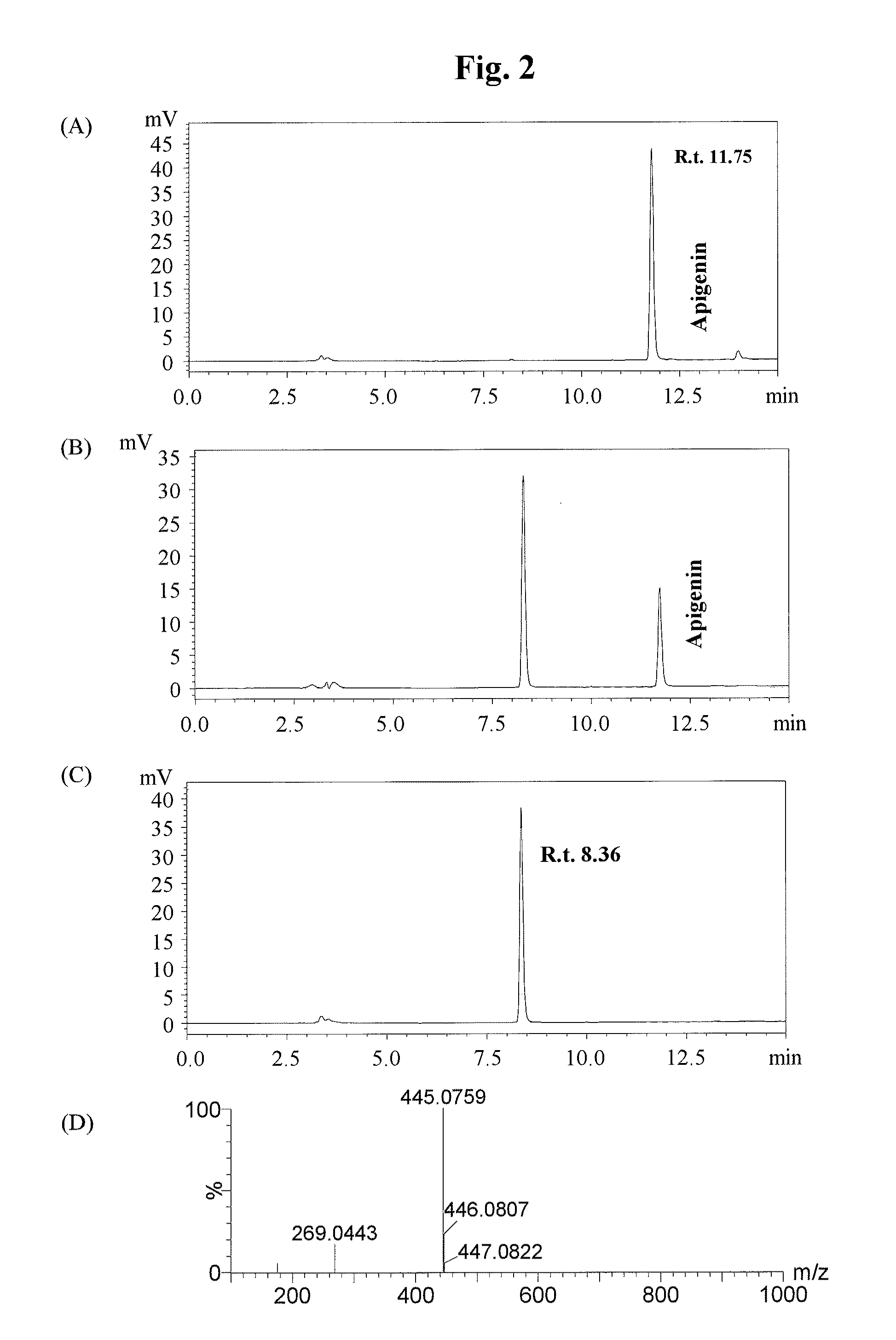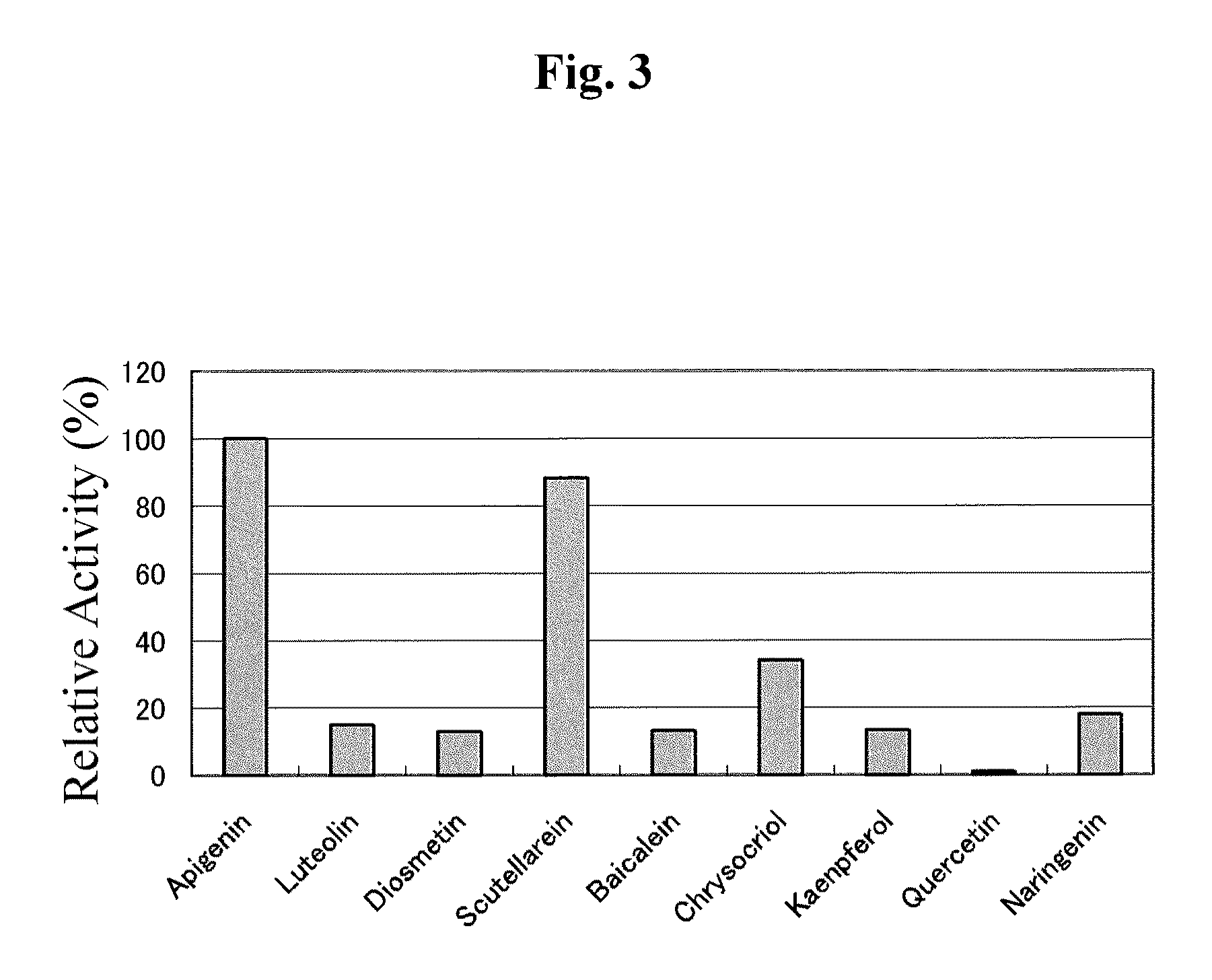Glucuronyl transferase and polynucleotide encoding the same
a technology of glucuronyl transferase and polynucleotide, which is applied in the direction of transferases, enzymology, organic chemistry, etc., can solve the problems that their biosynthetic enzymes (e.g., glucuronyltransferases) remain poorly understood, and achieve a broader substrate specificity
- Summary
- Abstract
- Description
- Claims
- Application Information
AI Technical Summary
Benefits of technology
Problems solved by technology
Method used
Image
Examples
example 1
[0106]The molecular biological procedures used in this EXAMPLE were performed in accordance with the methods described in Molecular Cloning (Sambrook et al., Cold Spring Harbour Laboratory Press, 2001), unless indicated elsewhere in detail.
[0107]It was found by homology search using the BLAST analysis that the glucosyltransferase gene (AmUGTcgl 0, Accession No. AB362988) for Scrophulariaceae Antirrhinum majus had 55% sequence homology on the amino acid sequence level to the glucosyltransferase gene SbUBGAT (Nagashima S. et al., Phytochemistry 53, 533-538, 2000) for Lamiaceae Scutellaria baicalensis (Ono, E. et al., Proc. Natl. Acad. Sci. USA 103, 11075-11080, 2006).
[0108]To isolate the gene encoding the flavonoid 7-O-glucuronosyltransferase VpF7GAT of Veronica persica of the same genus Scrophulariaceae, the two primers (SEQ ID NOS: 1 and 2) shown below were designed based on the sequence of Antirrhinum majus in the same family.
SEQ ID NO: 1
[0109]AmF7GAT-F1: 5′-GTG ATA GAT...
example 2
Construction of Vector
[0117]To clarify biological functions of the candidate protein for VpF7GAT obtained in EXAMPLE 1 (hereinafter this enzyme), an Escherichia coli expression vector capable of expressing cDNA for this enzyme was constructed. cDNA containing the full length ORF was amplified by PCR using a set of the primers represented by SEQ ID NOS: 9 and 10, specific to the candidate gene for VpF7GAT. As a template, cDNA synthesized using the total RNA extracted from the petals of Veronica persica described above was used.
SEQ ID NO: 9CACC-NdeI-VpF7GAT-Fw:5′-CAC CCA TAT GGA AGA CAC AAT CAT CCT-3′SEQ ID NO: 10XhoI-VpF7GAT-Rv:5′-CTC GAG TTT TTA CCC AAT AAC CAA CTT GAT-3′
[0118]PCR (KOD Plus Polymerase, TOYOBO) was performed, after thermal denaturation at 94° C. for 2 mins., with [94° C. for 15 secs., 50° C. for 30 secs. and 68° C. for 1.5 mins.]×35 cycles. The amplified DNA fragment was subcloned to pCR-Blunt II-TOPO vector (Zero Blunt TOPO PCR Cloning Kit, Invitrogen). The nucleoti...
example 3
Expression and Purification of Escherichia Coli Recombinant Protein
[0120]Using the respective plasmids obtained above, the E. coli BL21 (DE3) strain was transformed in a conventional manner. The transformant obtained was shake cultured in 4 ml of LB medium (10 g / l typtone pepton, 5 g / l yeast extract, 1 g / l NaCl) containing 50 μg / ml of ampicillin at 37° C. overnight. When the cells reached the stationary phase, 4 ml of the culture broth was inoculated into 80 ml of a medium of the same composition, followed by shake culture at 37° C. At the point when the cell turbidity (OD 600) became approximately 0.7, IPTD was added to the cells in a final concentration of 0.5 mM, followed by shake culture at 22° C. for 20 hours.
[0121]The following procedures were all performed at 4° C. The transformant cultured was collected by centrifugation (7,000×g, 15 mins.) and 2 ml / g cell of Buffer S [20 mM sodium phosphate buffer (pH 7.4), 20 mM imidazole, 0.5 M NaCl, 14 mM β-mercaptoethanol] was added to ...
PUM
| Property | Measurement | Unit |
|---|---|---|
| temperature | aaaaa | aaaaa |
| temperature | aaaaa | aaaaa |
| pressure | aaaaa | aaaaa |
Abstract
Description
Claims
Application Information
 Login to View More
Login to View More - R&D
- Intellectual Property
- Life Sciences
- Materials
- Tech Scout
- Unparalleled Data Quality
- Higher Quality Content
- 60% Fewer Hallucinations
Browse by: Latest US Patents, China's latest patents, Technical Efficacy Thesaurus, Application Domain, Technology Topic, Popular Technical Reports.
© 2025 PatSnap. All rights reserved.Legal|Privacy policy|Modern Slavery Act Transparency Statement|Sitemap|About US| Contact US: help@patsnap.com



